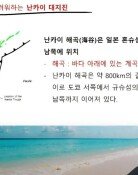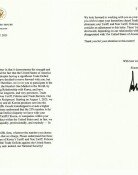Crop Insurance, Costly and Limited in Coverage
Crop Insurance, Costly and Limited in Coverage
Posted September. 23, 2003 23:16,
Gwon Oh-sang, a 56-year-old farmer living in Bonghwang-myeon, Naju City in South Cholla province, last year canceled the insurance he had maintained for his 1,500-pyong pear orchard for two years. He signed the contract in 2001 right after the crop insurance program was first introduced.
52-year-old Kim Jae-woon, who lives nearby in Geumcheom-myeon, is also considering withdrawing from the insurance program unless the policy is revised.
- Crop Insurance Program
Crop insurance program was enacted in 2001 under the agricultural product insurance law. The program presently covers apples, pears, persimmons, grapes, peaches and oranges. Farmers can choose one of four options 15, 20, 25 or 30% of compensations. About 80% of contractors have chosen the 20% compensation program.
Compensations are paid only when losses caused by damage exceed the money a contractor has put up. Some 50 to 80% of income will be offered.
- Small Number of Farmers Turn to Insurance
The number of insured farming houses dropped 16,522 this year from 2,098 last year. The figure represents only 14% of farming houses nationwide. About 40,000 houses, which initially planned to have insurance, chose not to sign a contract, citing expensive premiums as the reason.
Farmers pay 1.44% of total income in insurance installments on average, which is four times higher than 0.37% in Japan.
The government is covering 63.5% of total insurance expenditure, including 50% of insurance payments and 80% of operating costs. If government funding runs out, however, farmers will not be compensated for losses.
˝The government has increased funding to 20.5 billion won this year from 8.57 billion won last year, but it is still not enough,˝ said Yang Won-seok, manager of insurance payment in the Farmers` Cooperative Federation in South Gyeongsang province. ˝I wanted to have an insurance program, but I couldn`t since peppers are not covered by insurance,˝ said 47-year-old Cho Jae-gi, who lost about a half of his 3,500-pyong pepper field due to the typhoon Maemi.
- Farmers Remain Off Guard
A majority of farmers think that they will be spared from a natural disaster. So many have a partial program or remain reluctant to have insurance, which leads to running out of funds.
Farmers are supposed to pay insurance fees in March through April, when they also have to pay off debt.
- Lack of Government Funding
Countries such as the U.S., Canada and Japan provide full support for crop insurance in terms of operating costs. ˝If the government provides operating costs, farmers` burden will be reduced from 36.5% down to 27.5%,˝ said an official at the farmers` cooperative federation. This would mean that a farmer having a 3,000-pyong apple field will have to pay 836,000 won instead of 1.11 million won.
Local governments also need to be more committed to insurance programs. North Gyeongsang province offered 689 million won in funding this year and South and North Cholla Province also successfully increased the number of insurers by providing more support.
˝If the government eases burden on farmers` side, it will lead to growing number of insurers, which will in turn help establish foundation for the system,˝ said Km Hyeong-yeol, manager of agricultural finance at the South Gyeongsang branch of the farmers` cooperative federation.
˝Given competitive disadvantage of farming houses in the country, the government needs to offer more funds even for some time,˝ said Jeon Tae-gap, professor of agriculture at South Cholla University. ˝It also has to increase the number of covered items.˝







